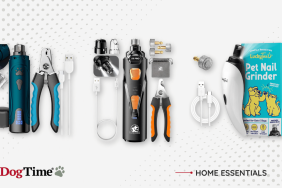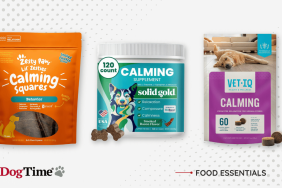Longer days, warm weather, and weekends spent frolicking with your furry friends all mean one thing–spring is here! As we emerge from our winter hibernation and prepare our yards, gardens, and home for the upcoming months, we don’t want to forget our pets. Increasing temperatures also mean the return of several health threats to our dogs and cats. Use this simple guideline to help make the blue skies and sunshine as fun and safe as possible.
1. Use heartworm and flea and tick preventive
Now. For everyone except those living in the coldest environments, your dog or cat should be receiving year-round monthly heartworm preventive. If you’ve been off heartworm preventive, be sure to have your pet tested prior to starting. As temperatures reach the 70s, biting insects like mosquitoes become very happy and prolific. In no time you’ll be swatting and reaching for the repellant. Now is also the time to make sure your pet is protected against fleas and ticks. If you wait until you see fleas and ticks to prevent them, it’s too late. You’ve got an infestation in your yard, house, or both. This year brings some new options for flea preventives so be sure to ask your vet about the latest advancements.
2. Avoid weekend-warrior syndrome
Each spring it inevitably happens: the first warm weekend appears and people think they need to make up for four months of inactivity. They take their out-of-shape, overweight selves with their out-of-shape, overweight dogs and decide to walk five miles, hike up their favorite mountain trail, or play an intense game of catch or Frisbee. Whatever it is, it’s too much and somebody gets hurt. This is the time of year when human ER clinics see injured knees, backs, and shoulders and veterinarians see torn cruciate ligaments, strains and sprains, and a variety of aches and pains. Take it easy. Gradually build up your strength and stamina and understand your dog needs time to adapt as well. This is especially true in older pets. What is only four to six months to you is more like two to three years to them. And if you do overdo it, be sure and have your pet checked out immediately. The sooner you have even a minor injury checked out and treated, the sooner your pet can return to enjoying the season.
3. Get the right gear
Today’s active pets can be better equipped than ever before. Having the right gear can increase not only the number of activities you can do with your pet but can also increase you and your pet’s enjoyment. High-quality harnesses, portable water bowls, and cool toys are items every dog lover should have on hand. For the more adventurous, doggie backpacks, protective clothing and glasses, life vests, and water toys are available. Whatever your interests, the correct equipment makes the time spent with your pet pal that much more fun.
4. Spring clean carefully
As you hasten to clean out your garage and prep your yard, remember these activities may pose a risk to your pet. Many cleaning agents, fertilizers, pesticides, weed-killers, and even mulch can all be dangerous to dogs and cats. Last spring I had a client who accidentally left a container of liquid plant food out on her porch. Her cat drank some and developed kidney failure. Luckily, the cat survived, but it could’ve easily been much worse. Remember, our pets can’t read warning labels. Look out for your little ones as you go about greening your homes.
5. Save a life this spring
Longer days also mean pets go into “heat.” For many stray, homeless, and neglected dogs and cats, this means unwanted litters. Animal shelters and rescue groups are typically stretched to capacity during spring. The economic downturn has resulted in fewer donations and more abandoned pets, creating even tougher conditions for animal shelters. Do what you can: volunteer, help with a pet adoption drive, promote spaying and neutering in your community, collect food, whatever. If you know someone looking for a pet, encourage adoption or rescue. We often think of November and December as a time of giving. Make Christmas come early for needy pets in your area this spring.
With a little foresight and planning, spring can be the best time of year for your pet. Go out and catch some rays, break a sweat, and give thanks for the times you share with your loved ones, both two- and four-legged!
Ernest E. Ward, Jr., DVM is the owner and chief-of-staff of Seaside Animal Care, a nationally recognized award-winning small animal practice. Dr. Ward is the current veterinarian for the Rachael Ray Show and is a spokesperson for Rachael’s Rescue. He has been featured on NBC Nightly News, Animal Planet, CNN, Animal Radio and numerous television and radio talk-shows around the country.









